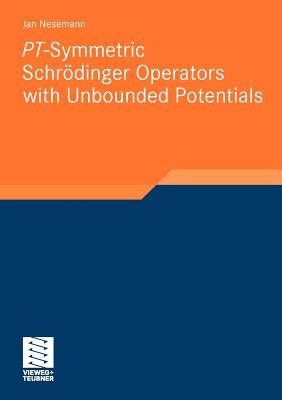
- We will send in 10–14 business days.
- Author: Jan Nesemann
- Publisher: Vieweg+Teubner Verlag
- Year: 2011
- Pages: 83
- ISBN-10: 3834817627
- ISBN-13: 9783834817624
- Format: 14.8 x 21 x 0.5 cm, minkšti viršeliai
- Language: English
- SAVE -10% with code: EXTRA
Pt-Symmetric Schrödinger Operators with Unbounded Potentials (e-book) (used book) | bookbook.eu
Reviews
Description
Following the pioneering work of Carl M. Bender et al. (1998), there has been an increasing interest in theoretical physics in so-called PT-symmetric Schrödinger operators. In the physical literature, the existence of Schrödinger operators with PT-symmetric complex potentials having real spectrum was considered a surprise and many examples of such potentials were studied in the sequel. From a mathematical point of view, however, this is no surprise at all - provided one is familiar with the theory of self-adjoint operators in Krein spaces.
Jan Nesemann studies relatively bounded perturbations of self-adjoint operators in Krein spaces with real spectrum. The main results provide conditions which guarantee the spectrum of the perturbed operator to remain real. Similar results are established for relatively form-bounded perturbations and for pseudo-Friedrichs extensions. The author pays particular attention to the case when the unperturbed self-adjoint operator has infinitely many spectral gaps, either between eigenvalues or, more generally, between separated parts of the spectrum.
EXTRA 10 % discount with code: EXTRA
The promotion ends in 23d.20:46:43
The discount code is valid when purchasing from 10 €. Discounts do not stack.
- Author: Jan Nesemann
- Publisher: Vieweg+Teubner Verlag
- Year: 2011
- Pages: 83
- ISBN-10: 3834817627
- ISBN-13: 9783834817624
- Format: 14.8 x 21 x 0.5 cm, minkšti viršeliai
- Language: English English
Following the pioneering work of Carl M. Bender et al. (1998), there has been an increasing interest in theoretical physics in so-called PT-symmetric Schrödinger operators. In the physical literature, the existence of Schrödinger operators with PT-symmetric complex potentials having real spectrum was considered a surprise and many examples of such potentials were studied in the sequel. From a mathematical point of view, however, this is no surprise at all - provided one is familiar with the theory of self-adjoint operators in Krein spaces.
Jan Nesemann studies relatively bounded perturbations of self-adjoint operators in Krein spaces with real spectrum. The main results provide conditions which guarantee the spectrum of the perturbed operator to remain real. Similar results are established for relatively form-bounded perturbations and for pseudo-Friedrichs extensions. The author pays particular attention to the case when the unperturbed self-adjoint operator has infinitely many spectral gaps, either between eigenvalues or, more generally, between separated parts of the spectrum.


Reviews